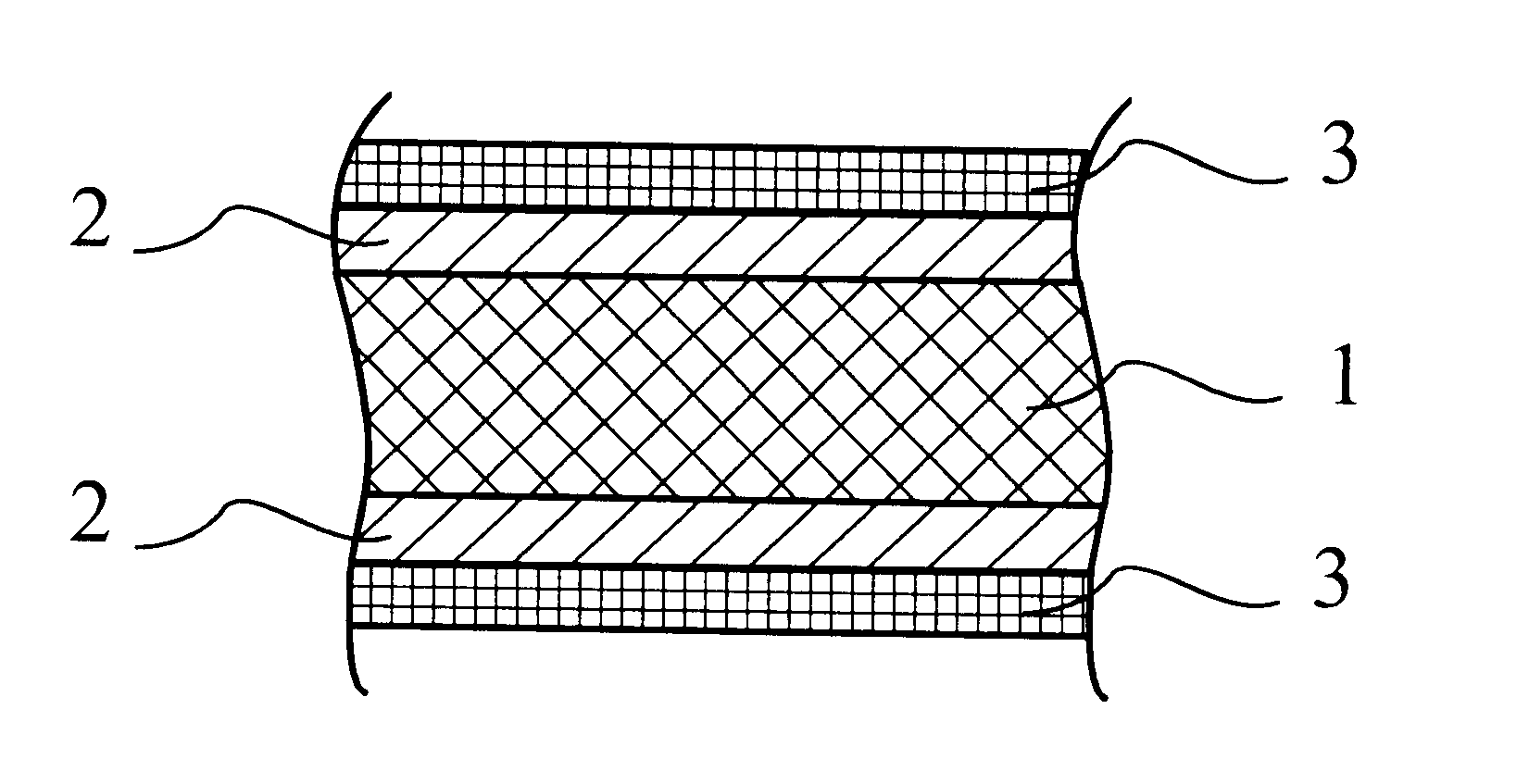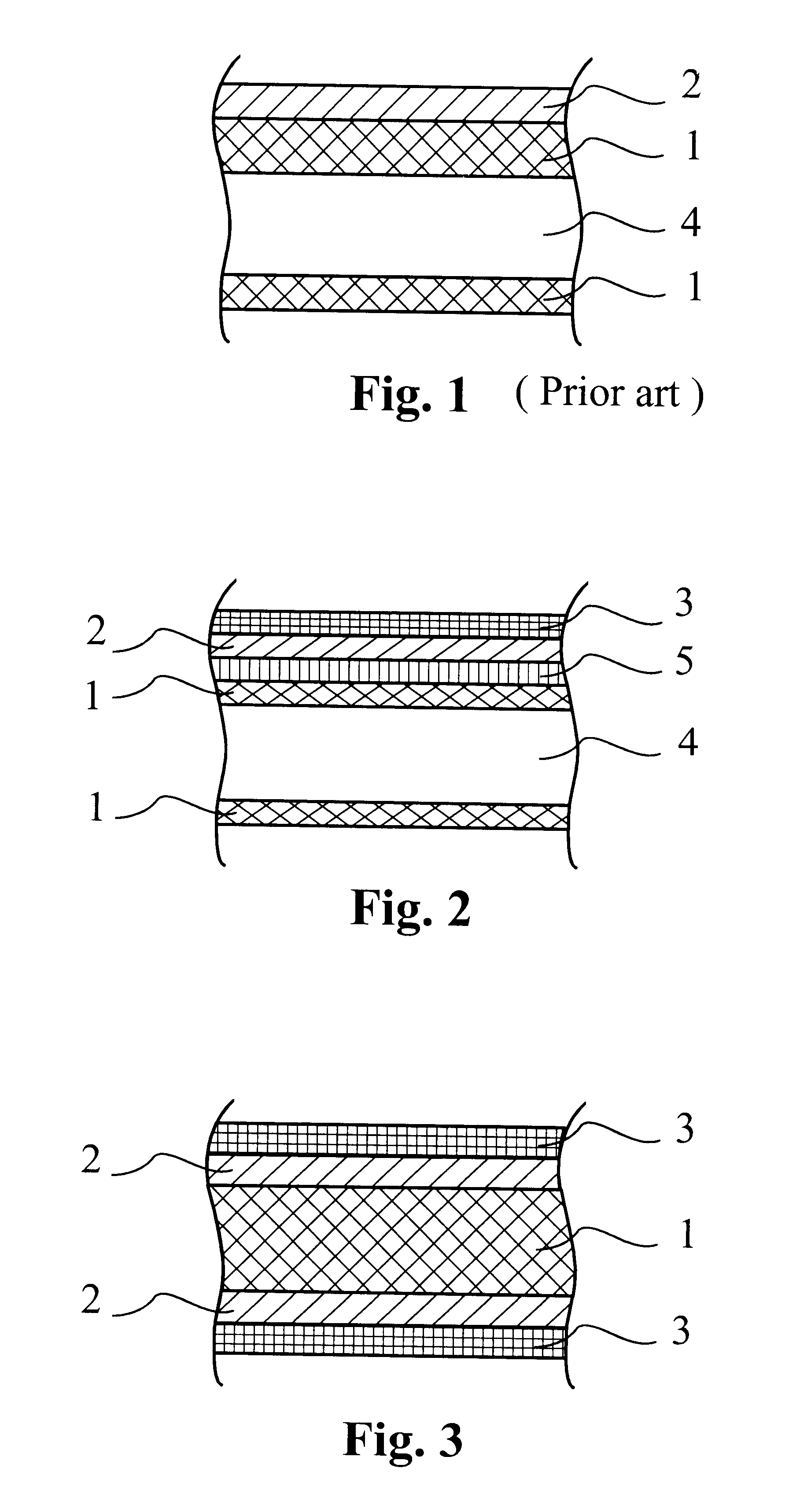Brazing product having a low melting point
a technology of low melting point and brazing product, which is applied in the direction of non-electric welding apparatus, surface reaction electrolytic coating, metallic material coating process, etc., can solve the problems of limiting the choice of possibly cheaper and/or stronger aluminium core alloys, high material cleanliness requirements, and critical temperature control during subsequent brazing operations
- Summary
- Abstract
- Description
- Claims
- Application Information
AI Technical Summary
Benefits of technology
Problems solved by technology
Method used
Image
Examples
example 1
On a laboratory scale aluminium brazing sheets manufacture from an AA3003 core alloy clad by means of roll bonding on both sides with an AA4045 clad alloy (see Table 1), and having a total thickness of 0.5 mm and whereby each clad layer thickness is 50 microns, have been pre-treated by alkaline etching and desmutting with intermediate rinsing and subsequently on both sides plated with various different metal layers, see also Table 2.
A thin zinc layer of about 30 nm has been applied using a zincate immersion treatment using ChemTec (trade name) 024202 for 12 s at room temperature.
A nickel-lead layer has been applied using a basic bath comprising 50 g / l nickel sulphate, 50 g / l nickel chloride, 30 g / l sodium citrate, 1 g / l lead-acetate, 75 ml / l ammonium hydroxide (30%). The plating conditions at 26.degree. C. were such that a plating time of 50 seconds resulted in a nickel-lead plated layer of 0.5 micron thickness using a current density of 3 A / dm.sup.2.
A nickel-bismuth layer has been ...
example 2
Sample 3 of Example 1 has been repeated but instead of an AA4045 clad layer an clad layer comprising, in weight percent, 9.6% Si, 1.32% Mg, balance aluminium and impurities has been used. In the plating bath the addition of Bi-ions has been omitted such that the applied Ni-layer is entirely consisting of nickel. Subsequently the same series of testing has been carried out given the same results as for Sample 3 in Example 1.
The presence of Mg in the aluminium clad layer had no detrimental effect on the brazeability of the brazing sheet product. In an amount of up to about 2.5% the Mg may even omit the addition of Bi to the aluminium clad layer and / or layer comprising nickel and still provide a good brazeability.
example 3
Sample 4 of Example 1 has been used as a starting point for plating additional metal layers on the copper layer.
A sample 9 has been manufactured by plating a further zinc layer on the copper layer using a conventional zinc-sulphate plating bath.
And a sample 10 has been manufactured by plating a tin layer on the copper layer. The composition of the aqueous tin plating bath used was:
The composition of the metal filler and the melting range of the metal filler have been determined in the same manner as in Example 1, and the results have been summarised in Table 4. The composition is given is weight percent, the balance is aluminium and impurities. The impurities originate mainly from the aluminium clad layer comprising for example Fe as impurity, see also Table 1.
The plated specimens of Sample 9 and 10 had similar adhesion and brazeability results as Sample 4 of Example 1. The plated zinc and tin layer in sample 9 and 10 respectively, do not act as a bonding layer for the aluminium cla...
PUM
| Property | Measurement | Unit |
|---|---|---|
| liquidus temperature | aaaaa | aaaaa |
| thickness | aaaaa | aaaaa |
| thickness | aaaaa | aaaaa |
Abstract
Description
Claims
Application Information
 Login to View More
Login to View More - R&D
- Intellectual Property
- Life Sciences
- Materials
- Tech Scout
- Unparalleled Data Quality
- Higher Quality Content
- 60% Fewer Hallucinations
Browse by: Latest US Patents, China's latest patents, Technical Efficacy Thesaurus, Application Domain, Technology Topic, Popular Technical Reports.
© 2025 PatSnap. All rights reserved.Legal|Privacy policy|Modern Slavery Act Transparency Statement|Sitemap|About US| Contact US: help@patsnap.com


